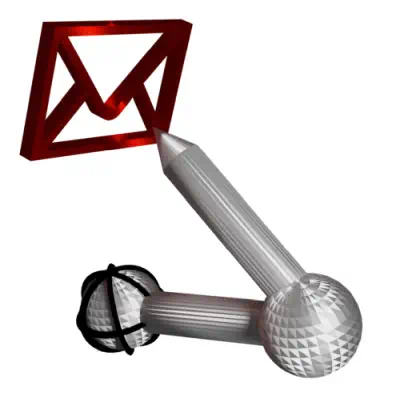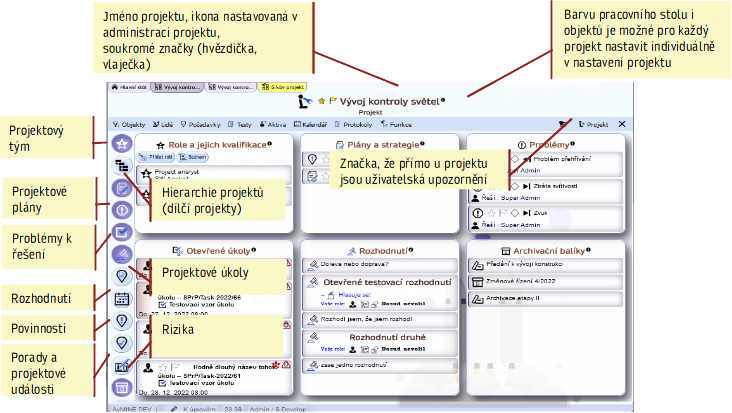AyMINE – Technical documentation
Modules
Integration with ERP Abra Gen
 Task, project & quality management
Task, project & quality management
Manager approval with the task report
Why some data can't be deleted
GDPR and record of qualifications
Qualification of user or contact
Right to Manage Qualifications
Adminitration of areas, projects, calendars
Failure Analysis for an Individual Property of a Component or Process
FMEA – Probability of Detection
FMEA – Probability of Occurrence
 Task, project & quality management
Task, project & quality management
Administration of the Task Management Module
System rights for the task management module
Improvements and Preventive Measures
Methodology and Quality Management systems
What makes up the methodology / SMJ
Problems, tickets and their management
Collaborative Resolution of Multiple Problems
Customer Service Response Generation
Incident and Quality Issue Management
Objects affected by the problem
Problems, Incidents, Helpdesk Tickets
Return project plan by baseline
Sample tasks and methodologies of the area
Effect of the task on the right to modify the attached object
The person responsible for the task
Working procedure – task definition
Management of responsibilities - RACI Matrix
Objects related to the task pattern
 Contacts and directories module (CRM)
Contacts and directories module (CRM)
Address book list and management
Directory or people and companies
Order overview for customer groups
 Contacts and directories module (CRM)
Contacts and directories module (CRM)
System Permissions and CRM Module Settings
Send bulk messages in compliance with GDPR
How to correctly forget a person's details
Unsubscribe and set preferences
for bulk mail
 Web management and automation
Web management and automation
Receiving a message from the web
Human resources
Personalistics – User Permissions and roles
Human Resources module security
Manage department / division data
Overview of Personnel Information for pracov# Employment Contract
Synchronizing staff and system users
 Products, assets and sales
Products, assets and sales
Creating and processing orders
Manage the Property & Business module
Why are the Quality criteria usefull
Managing Finance
Metrics and Measurements
Work summaries from generated data
Technical Modules
Sabre plugin module
Enterprise Architect connector
Database link to Enterprise Architect database
Enterprise Architect connector
System Modules
 The AyMINE Framework Module
The AyMINE Framework Module
AyMINE — Tips for Mobile Usage
Configure how your system looks and works
Gestures and Keyboard Shortcuts
More about how the system works
Private notes and tags for objects
Overview of Modules and Record Types
 Project
Project 
The project creates a space for complete management of information and activities related to a single project
Projects are designed to manage activities involving a group of people (a project team) working together, with a clearly defined objective that is based on a specification (requirements).
The individual records that are supported within the project management are described in a separate chapter Project records.
Project manager
The project manager is the person responsible for the project (set in the administration window when the project is created, the manager can be changed later).
The project manager administers the team – defining what roles and qualifications the project needs and who is in them. No one but the project manager can change the project team.
Project team
The project team consists of people who are participating in the project. Each of them is always in a project role.
If there's a defined methodology (a standard that the project follows), the project roles are defined by the methodology. The methodology also defines what qualifications the person in the project role must have.
(A project role is not an organization role. For example, a user may be a project manager – they do not need to have this role within the organization. Or someone may have the role of an auditor in a project, even if they do not work as an auditor within the organization). We discuss this more in the linked article.
 Project team in the project settings
Project team in the project settings
When a new project is created, a new group for the project team is also created. (The group is among the groups and roles in the system administration). This group is automatically synchronized with the project team that is managed on the project dashboard. If the manager adds another person to the project team, they are automatically added to this group and vice versa.
If you assign a custom group to a project before saving it, the mechanism described above will not be active. This makes sense if the projects are done regularly by the same group of people; then it doesn't make sense to create a new group for each project.
Reminder: The project group determines the access rights to objects in the project. Therefore, the people who are actively working on the project need to be in this group. However, if you need for example a consultation from someone, who is not actively working in the project, you can give them a project task and they can complete it even if they are not members of the project.
Therefore:
- If you already have a defined group that will carry out the project, add it to the project.
- If the project will have its own team, leave the field blank and the project group will be created automatically.
Frequently asked questions about the project team
Is it possible to change the group of people working on a project?
The project administration behavior with respect to user groups can be changed during project lifetime. However, the project group is no longer automatically created. You can create it manually (custom group button), but you need to include the actual people from the project team in the group. Others will be added automatically.
On the contrary, if you assign another group to the project (e.g. development department), the system will not change the group according to the project team.
We need to have project data accessible by someone who is not in the project
A project manager can manually add users to a group that is administered automatically by the system, in the same way as any other group. Automatic synchronization does not prevent the administration of the project group.
Do we need to keep project groups of people in the system after the project is finished?
No, the group is continuously changing and always corresponds to whoever is working with the project. It is logical that towards the end there is hardly anyone. (The last one to close the door is usually the project manager.) The moment the project is finished, it is correct to remove the group that was created for the project.
The group is not removed automatically – it is not unusual for a project to be paused or even terminated, but reactivation is expected.
The project administration as well as business areas have an active user group and a reader group. Readers tend to be people who have the right to access information from the project after the project has ended, auditors, and usually the former project manager. These people should be within the project setup in the project readers group, i.e. people with access for viewing. In this way, the know-how from the project will remain accessible and at the same time protected.
Remember: Projects tend to contain a lot of information that is subject to confidentiality. Therefore, you should not grant the right to inspect the project to a general group like all project managers. You would probably violate the protections. If your company works, for example, according to ISO 27000 or ISO 21434, you must give the same attention to the group of readers as you do to the group of active users.
Where to learn more:
- More general information about project management software support.
- Objects that belong to project management are described here.
- The project schedule is described here.
